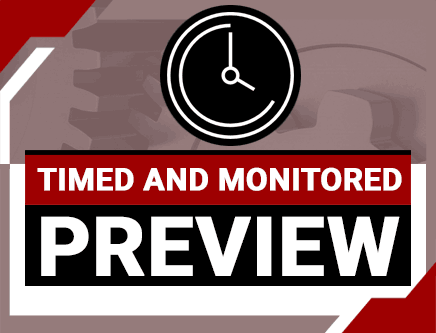Building Management System (BMS and HVAC Controls) (Ohio Timed & Monitored)
Credit: 5 PDH
Subject Matter Expert: A. Bhatia, Mechanical Engineer
In Building Management System (BMS and HVAC Controls), you'll learn ...
- An overview of control system basics
- Different types of sensors and how they are used
- How DDC’s communicate and share information in large building projects
- The hardware and software elements of BMS
Overview

To meet the Ohio Board's intent that online courses be "paced" by the provider, a timer will be used to record your study time. You will be unable to access the quiz until the required study time of 250 minutes has been met.
Credit: 5 PDH
Length: 111 pages
Building Management Systems (BMS) are computer-based systems that control a building's heating, ventilation, and air-conditioning (HVAC) systems, lighting, access control, security, intelligent lifts, water system, entertainment, and fire systems. BMS is often described as the “brain” of smart buildings.
BMS is most commonly implemented in large projects with extensive mechanical and electrical equipment. The BMS allows for efficient use of energy by responding to varying conditions quickly and continuously without compromising on the comfort of the occupants. BMS systems also provide information on maintenance scheduling, data logging, and providing quick and effective responses to problems. They save time and money.
As an HVAC engineer, you will be faced with numerous design challenges on specifying the logical sequence of operations, equipment control, remote monitoring, data communication, specifications, and type of controls. With more and more buildings getting equipped with sophisticated controls, the lines between control engineers and mechanical engineering are becoming blurred, with each having to know more about the other's discipline.
This course covers fundamental aspects of BMS design and HVAC controls. The course begins with a necessary discussion of control systems, describes the types of sensors, controllers and controlled devices, and then moves quickly to direct digital controls (DDC) and Building Management Systems (BMS).
The target audience for this course is electrical, mechanical & control engineers, HVAC designers, architects, maintenance and facilities personnel responsible for building services and infrastructure.
Specific Knowledge or Skill Obtained
This course teaches the following specific knowledge and skills:
- How a controller works and how it can be used
- How controlled devices are used
- What Direct Digital Control (DDC) is and what functions these devices can perform
- Understand how DDC’s are networked to form a Building Management System (BMS)
- The networking and communication principles of BMS
- The standard and open communication protocols – BACnet and LonWorks
- The capabilities of BMS with a focus on HVAC systems
Certificate of Completion
You will be able to immediately print a certificate of completion after passing a multiple-choice quiz consisting of 30 questions. PDH credits are not awarded until the course is completed and quiz is passed.
| This course is applicable to professional engineers in: | ||
| Alabama (P.E.) | Alaska (P.E.) | Arkansas (P.E.) |
| Delaware (P.E.) | District of Columbia (P.E.) | Florida (P.E. Area of Practice) |
| Georgia (P.E.) | Idaho (P.E.) | Illinois (P.E.) |
| Illinois (S.E.) | Indiana (P.E.) | Iowa (P.E.) |
| Kansas (P.E.) | Kentucky (P.E.) | Louisiana (P.E.) |
| Maine (P.E.) | Maryland (P.E.) | Michigan (P.E.) |
| Minnesota (P.E.) | Mississippi (P.E.) | Missouri (P.E.) |
| Montana (P.E.) | Nebraska (P.E.) | Nevada (P.E.) |
| New Hampshire (P.E.) | New Jersey (P.E.) | New Mexico (P.E.) |
| New York (P.E.) | North Carolina (P.E.) | North Dakota (P.E.) |
| Ohio (P.E. Timed & Monitored) | Oklahoma (P.E.) | Oregon (P.E.) |
| Pennsylvania (P.E.) | South Carolina (P.E.) | South Dakota (P.E.) |
| Tennessee (P.E.) | Texas (P.E.) | Utah (P.E.) |
| Vermont (P.E.) | Virginia (P.E.) | West Virginia (P.E.) |
| Wisconsin (P.E.) | Wyoming (P.E.) | |




